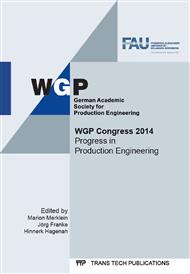p.229
p.237
p.245
p.253
p.261
p.269
p.277
p.285
p.293
Experimental and Numerical Analysis of Dry Shearing of Aluminum 6082
Abstract:
In shearing and blanking lubrication is widely used. For future production one aim is to decrease the use of oil or to do without such lubricants. For this purpose it is interesting, if there is an influence of using lubricants on the cut edge quality. Therefore numerical analysis and experiments are carried out with a blanking tool, installed in a servo press, to analyze the cut edge quality of shearing of aluminum 6082-T6. Using FE-simulation with Lemaitre’s damage model, the process is simulated with different friction coefficients for simulate different kinds of lubrication. In this paper the circle punch with 16 mm diameter is used (piercing). In the experiments the cut edge quality and the maximum shearing force do not differ significantly. With a friction coefficient of 0.2 it is possible to give the right cut edge quality by using the damage model of Lemaitre.
Info:
Periodical:
Pages:
261-268
Citation:
Online since:
September 2014
Authors:
Price:
Сopyright:
© 2014 Trans Tech Publications Ltd. All Rights Reserved
Share:
Citation:


